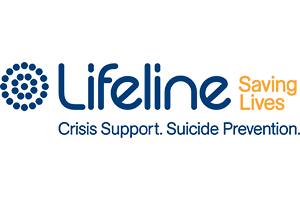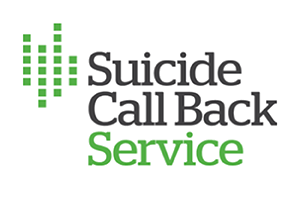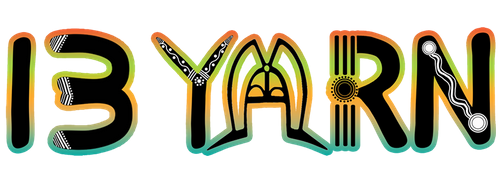Something’s not right
- Mark Discussion as New
- Mark Discussion as Read
- Float this Discussion for Current User
- Favourite
- Subscribe
- Printer Friendly Page
- Mark as New
- Favourite
- Subscribe
- Get link
- Flag for Moderator
16-03-2022 12:25 PM - edited 12-07-2022 04:01 AM
16-03-2022 12:25 PM - edited 12-07-2022 04:01 AM
Finally Found - A CBT-p Practitioner -Part 2
Originally I had intended to report my experiences and experiments with Cognitive Behavioural Therapy for Psychosis (CBT-p) on a fortnightly, visit by visit basis, to the psychologist that I have chosen to work with. After thinking about this for a while I came to the conclusion that this could easily finish up to be a superficial way of describing things. While it would describe the external process, it could at the same time completely skip over the inner experiences which is what this exercise is really about. What I am reporting on is of course based on my own ongoing experiences together with information from some books I have read and an online Udemy course on CBT-p that I would recommend to anyone interested in exploring this subject in more depth.
Here is a link to the course that another member of this forum put me onto some time ago
In passing it should be noted that the term CBT-p, which I use for convenience, actually describes a range of techniques which could vary significantly between different practitioners. The important criteria, as far as I am concerned, is that the therapist is skilled and comfortable working with someone prone to psychotic episodes and who also employs a CBT approach. In my experience, many mental health practitioners including, most psychiatrists are not comfortable or experienced dealing with psychosis and of course few psychiatrists utilise psychological techniques like CBT at this point in time. Their typical response to psychosis is to treat it as a highly undesirable aberration of human behaviour and to try and suppress such tendencies with medication.
Biomedical vs Psychological Approach
Switching from a biomedical to a psychological approach to deal with psychotic mental health issues requires a substantial shift in our beliefs and the way we have come to think about mental health. Unfortunately the biomedical perspective has become so entrenched in our contemporary way of thinking that it may be difficult for some people to make this shift. A medication free approach is also likely to be viewed by members of the psychiatric profession, as radical, impractical and possibly even heretical.
The biomedical approach begins with the idea that mental illness is just like any other illness. Treatment starts with a diagnosis by a skilled medical specialist, usually a psychiatrist and is treated by choosing the appropriate medication and periodically adjusting it as required. There are other treatments such as electroconvulsive treatment (ECT) but these are used less frequently these days and are even banned in some countries. (not in Australia)
The biggest problem with the biomedical approach is that it doesn’t work very well. Many of the heavily promoted claims and ideas about its efficacy are simply untrue. Furthermore the overuse and abuse of medication has become a major problem with many doctors, government authorities and health insurance companies. The ongoing struggle to reduce the significant costs of mental illness provides the incentive for what at first glance appears to be a quick and easy solution.
Much of the problem with the biomedical approach results from its attempts to suppress symptoms rather than cure any underlying condition. This approach, has become the norm in most first world countries. It has a tendency to result in high levels of ongoing distress and dysfunctionality for many people who are treated this way together with significant risk of health problems and premature death.
For this reason an increasing number of people who fall under the banner of mentally ill are resisting the biomedical approach and demanding a better alternative.
Diagnosis
The first thing to be challenged by the psychological approach is the concept of diagnosis.
I clearly recall the time many years ago when I was diagnosed with schizophrenia. I experienced a great sense of relief and happiness. I though that at last someone had discovered what my problems were all about and would be able to help me. I soon learned otherwise.
The type of psychiatric diagnosis that is typically carried out today has been repeatably shown to be inaccurate and unreliable. Accept for a very small proportion of people with mental illness due to diseases such as brain tumours or damage to the brain through accident etc, a medical type diagnosis is inappropriate because the underlying problems are not, as is frequently claimed, due to a physical disease or an imbalance in brain chemistry.
What is going on is that our thoughts, ideas, beliefs, feelings and memories have become connected in ways that create distress and dysfunctional behaviour. It seems highly likely to me that these problems are at least in part due to the ever increasing demands placed on people. We grow up and live in a world where there is so much focus on achievement that it is hardly surprising that our brains struggle to adapt. A pill to fix up all this mess that life tends to create is of course highly desirable. Unfortunately no such intervention is even close to the reality of what can currently be achieved or what is likely to be possible in the foreseeable future. We have fallen into the trap of trying to use science fiction to deal with reality.
Normalisation
Whereas the biomedical approach is all about treating symptoms as an illness and attempting to eradicate these symptoms, CBT-p takes an almost opposite approach.
Psychotic experiences are regarded as just a part of normal, everyday life that at times becomes too predominant and causes distress to both the person experiencing them and others around them.
The first objective is to just observe and understand these experiences and accept that we do not need to get rid of our weird and wacky ideas which nearly everybody, whether they admit it or not, has from time to time.
This process is referred to as normalisation. It is the means by which psychosis becomes understood as just another part of the human experience. This can reduce the vicious circle of discrimination and self stigmatisation that the medical viewpoint engenders. In time, this will hopefully lead the person undergoing this process to develop more culturally acceptable ways of interpreting these experiences. There may also be some realisation that societies’ consensual reality isn't always correct or valid. To this extent, those wacky ideas, hallucinations, delusions etc may be signals that society may well need to take heed of. Of course before we can present them in any sort of meaningful ways to others, we first need to learn how to manage them within ourselves.
It appears from the above that we may have also stumbled upon the answer to the long debated question about the relationship between creativity and insanity.
Mapping The Territory
The CBT-p approach appears to replace diagnosis with what I have called “mapping the territory”. Unlike diagnosis, which attempts to cram a group of symptoms into a single category or label such as bipolar disorder or schizophrenia etc, this psychological map is multifaceted and will be unique for each person.
There appears to be four parts to this map.
- Acknowledgement and Acceptance - Identifying thoughts, feelings, emotions, memories, urges, sensations and more without necessarily trying to change anything.
- Diffusion - Untangling the unhelpful thoughts, feelings, emotions etc and responding to these as internal mental experiences rather than as external compulsions to act.
- Values -Determining desired and chosen life directions.
- Committed Action - Connecting actions with chosen values and building successively larger patterns of effective actions.
Summary
It should be fairly obvious that the CBT-p method is very different to the one offered by the medical profession. How well it works for me in practice only time will tell but from what I have read the evidence is that it is highly effective. After only two sessions, I am already feeling more optimistic. I can see ahead to what appears to be a viable plan to take back control of my life from the mental health authorities who seem all too ready to stuff people like me with unwanted medication and then throw us onto the human garbage heap.
I am happy to try and answer anyone's questions to the best of my ability, bearing in mind that I am not an expert and I am just feeling my way cautiously through this experience.
Here is a link to the first article in this series
Finally Found A CBT-p-Practitioner
Here is a link to the next article in this series
Finally Found A CBT-p Practitioner Part 3
Regards
Willy
- Mark as New
- Favourite
- Subscribe
- Get link
- Flag for Moderator
25-03-2022 12:01 PM - edited 25-03-2022 12:03 PM
25-03-2022 12:01 PM - edited 25-03-2022 12:03 PM
Re: Finally Found - A CBT-p Practitioner -Part 2
Wow @Willy, this is a really helpful post and I think it's one that deserves a bump up 😊 You've written here about your understanding and experience with CBT-p with eloquence, and what really resonates is your experience of being, as you say, "thrown on to a human garbage heap"...reading that really left a mark on me, and I'm genuinely so sorry to hear that you've been treated in such a way that you're left feeling that.
My understanding of schizophrenia and/or psychosis is somewhat limited, and I perhaps naively thought that for most people living with these conditions that medication was the first line for treatment. Whilst I'm sure it plays a significant role for many, it would of course stand to reason that just like other mental health conditions, psychosis could also be supported by therapeutic interventions, such as CBT-p.
Your expression of the normalisation process also resonates, because for people who live with conditions such as OCD (particularly Pure OCD), thoughts can sometimes feel quite out there and scary, and that's where a level of acceptance is helpful.
How have you been finding the therapy over the past couple of weeks? You mention that you're feeling optimistic, I hope that optimism is still going strong.
- Mark as New
- Favourite
- Subscribe
- Get link
- Flag for Moderator
04-04-2022 02:22 PM
04-04-2022 02:22 PM
Re: Finally Found - A CBT-p Practitioner -Part 2
I love this account. It also really speaks to my process. Those 4 map steps resonate with the improvised ACT that I've been doing. I might adopt that approach @Willy , if you don't mind me copying your homework.
- Mark as New
- Favourite
- Subscribe
- Get link
- Flag for Moderator
10-12-2022 08:44 PM - edited 10-12-2022 08:45 PM
10-12-2022 08:44 PM - edited 10-12-2022 08:45 PM
Re: Finally Found - A CBT-p Practitioner -Part 2
It does remind me of ACT as well, the diffusion technique particularly. @wellwellwellnez
I remember starting the udemy course but getting distracted and not finishing it. I'll go back and try again, thanks for the link. @Willy





